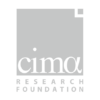myDEWETRA.world is an effective organizer of information and data from several sources and can work at several scales. It is used for visualizing and post-processing data from global, regional, national, and local sources. Also, national data can be easily integrated in the platform and can be displayed together with international data.
myDEWETRA.world is based on the concept that information can remain at the proprietary institution and shared using the OGC standard protocols on Web services. Accredited users will therefore be able to have access to a variety of information from the entities that develop data and make them available for such visualization.
Interoperability is a key feature of the myDEWETRA.world platform. The idea is that different platforms coexist and share information, enabling different beneficiaries to use appropriate tools without limiting access to information. This can be done through Web Services, compliant with OGS standards for data exchange. myDEWETRA.world is an open-source software; therefore, beneficiaries can adapt it to their own needs.
myDEWETRA.world implements the most common and standard GIS patterns of geospatial data processing, sharing and presentation. It is based on a series of open-source GIS software, e.g., the PostGIS spatial extension for PostgreSQL for storage and query information about location and mapping, the GeoServer for sharing geospatial data, the GeoTools Java library for geospatial data manipulation, the GDAL library for raster and vector geospatial data processing, Leaflet JavaScript Library for interactive maps implementation, and other third-party open-source GIS libraries. Many of those softwares are supported by the Open-Source Geospatial Foundation. In addition, GeoServer implements industry standard OGC protocols such as Web Feature Service (WFS), Web Map Service (WMS), and Web Coverage Service (WCS). Additional formats and publication options are available as extensions including Web Processing Service (WPS), and Web Map Tile Service (WMTS) for interoperability. Data preparation is carried out by means of QGIS software and other open-source GIS Desktop products (GRASS GIS, etc.).
The best solution highly depends on the capacities of national agencies. myDEWETRA.world has different progressive possibility of implementation. The possibilities have been formulated based on the experience acquired by the Italian Civil Protection Department and by CIMA Research Foundation in existing installations. For many details on the levels, see the session “Access”
If you are an eligible user, you can receive credentials for standard access to myDEWETRA.world. This includes the availability of some global datasets. Custom profiles are subject to costs depending on the functionalities required. For more details and contacts see the session “Access”
myDEWETRA.world can work offline if both client and server are installed in local servers. The users will be able to visualize data stored in the local server. If there is an interest in this specific solution, CIMA Research Foundation and Italian Civil Protection Department can provide more technical information on the possible setting and resources for the maintenance.
Yes, it is. myDEWETRA.world allows the possibility to create different users with different credentials for the same configuration: different users can access and visualize different data or tools.
Yes, it does. Scripting and algorithms scheduling are highly configurable, based on the user’s needs and data availability. For instance, in Italy some rainfall products are updated every 5 minutes. This is extremely useful to detect deep convection. Automated email/sms can be sent whenever a condition is satisfied (for example when one or more thresholds are exceeded).
myDEWETRA.world has been launched in November 2018. In 2019, a pilot study, with country configuration for Angola, Ethiopia, UR Tanzania and Zambia, was run. The system has been used in support to forecasters and to exchange information among relevant authorities, mainly met-services, hydro-services, and Disaster Management. The results of the pilot study were successful. CIMA Research Foundation and National Authorities have developed a roadmap for improving EWS in the countries; the roadmap envisages the implementation of myDEWETRA.world and foresees a full operationalization of the system. For more information see the session “Users”
myDEWETRA.world can integrate and visualize outputs from FFGS, and we have already explored the feasibility, so, if requested, this is possible. That would facilitate the comparison among different models. Moreover, the forecasters could combine the output of FFGS with the scenario tools of myDEWETRA.world for building a risk scenario and assessing the potential impacts of upcoming floods.
myDEWETRA.world can incorporate many hydrological or hydraulic outputs. The platform organizes the information and data produced by hydrological or hydraulic models implemented in a defined area or basin. So far, the global version myDEWETRA.world integrates GLOFAS but could include other model output. At country level, CIMA Research Foundation implemented FloodPROOFs hydrological modelling chain, for instance in Bolivia, Albania, Lebanon, Guyana and Barbados.
In Italy, myDEWETRA integrates the outputs of several meteo-hydrological modelling chains available for the whole national territory. Other models are implemented at basin level (e.g. fews for Po river). The output of hydraulic models can be also easily integrated into myDEWETRA.world (Telemac is one example implemented in South America and Italy). For more information, please see the session “Users“
The platform was created for the representation of the weather-hydrological risk, but data and models of other risks can be definitively entered into the system to achieve a multi-risk perspective.
myDEWETRA.world was designed to facilitate short term operations for imminent weather-related hazard (monitoring and forecasting, scenario building and bulleting preparation and issuing). Integration of some seasonal products was tested to help monitor the evolution of drought conditions with respect to forecasted trends. Complete seasonal customization is technologically possible, although never implemented.
So far, we have integrated the “Lake Water Quality” product by Copernicus, based on Sentinel 2 and covering Europe and Africa at 100 m resolution. The platform can be used as a multi-risk platform, it allows the comparison of several variables to analyse the mutual interactions. For example, in the Volta project, we are integrating data and information from ecosystems provided by IUCN.
There is a crop yield model used in the agricultural losses evaluation that is derived from the FAO crop yield model. However, it is necessary to note that myDEWETRA.world is only a tool for visualizing data, models and procedures, so in principle any model can be hosted especially if the model can be accessed through a standard API or similar.
Click here to download the step-by-step tutorial

DEVELOPED BY

PRIVACY POLICY | TERMS OF USE | COOKIES POLICY | © 2020 Dipartimento della Protezione Civile

myDEWETRA.world is an integrated system developed by the Italian Department of National Civil Protection (DPC)- Presidency of the Council of Ministers, for real-time prediction, monitoring and surveillance of natural hazards (floods, landslides and wildfires). The system is the result of an Agreement among DPC and CIMA Research Foundation for science-based disaster risk management methodologies and technologies in Italy and in countries where the Italian Cooperation is active. myDEWETRA.world combines scientific knowledge, methodologies and the standardization of operating procedures. It is subject to continuous research and development in order to meet the needs of disaster risk managers and meteo-hydrological national services. For the DPC - Responsible for the Convention: Eng. Paola Pagliara | Design and Requirements: Eng. Angela C. Corina.
